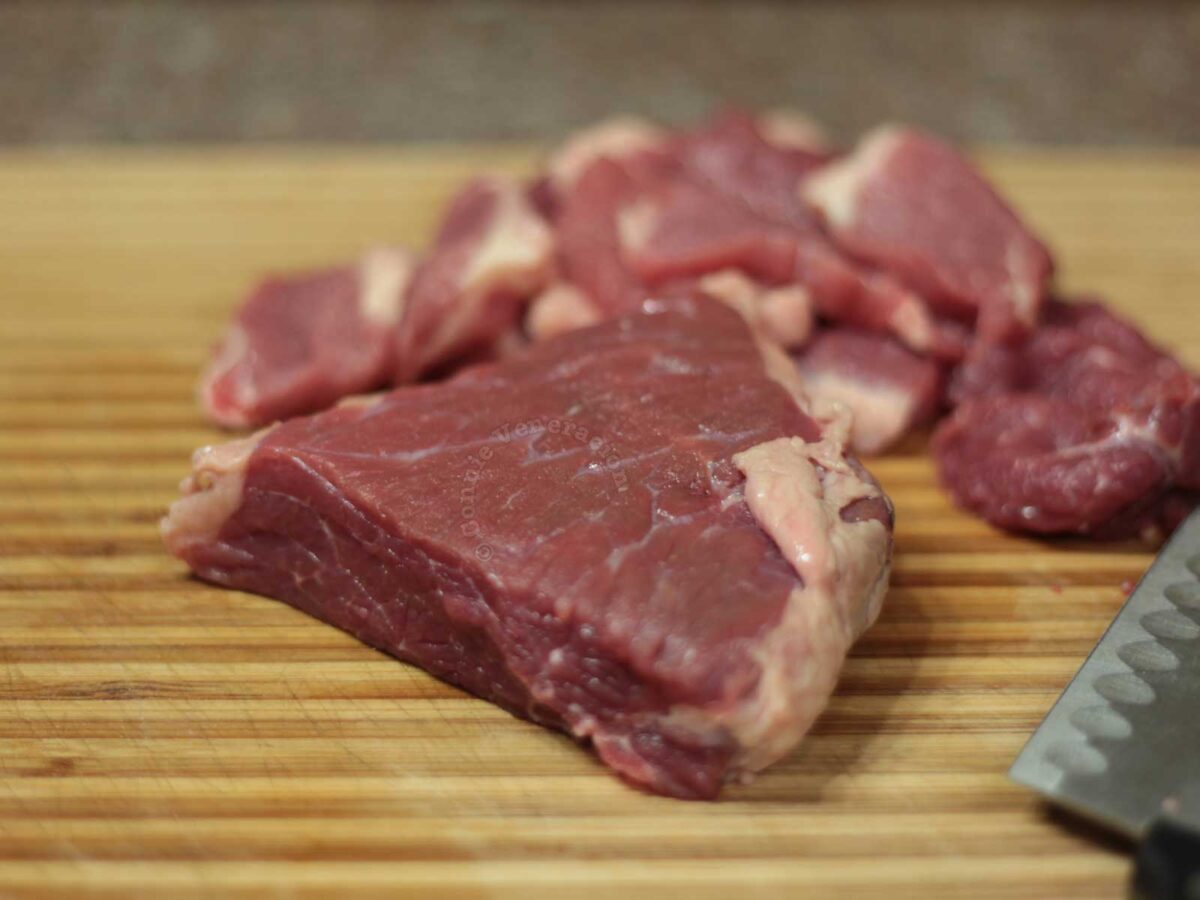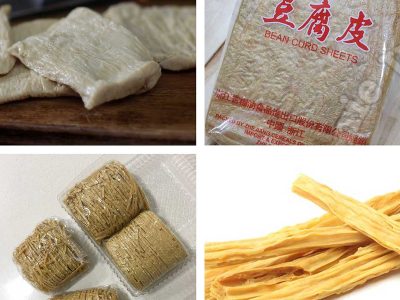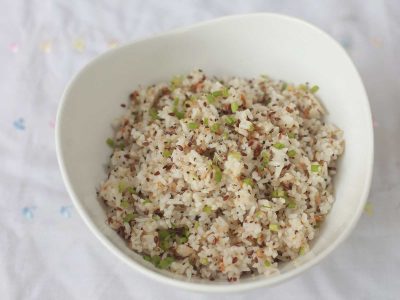The best meat and vegetable stir fries have small pieces of tender meat and lightly crisp vegetables. How does the meat come out so tender? Is the high cooking temperature enough?
Nope. Even cutting meat into small pieces won’t be enough. To tenderize meat for stir frying, pound the meat to break fibers, cut across the grain to shorten those fibers then soak in baking soda solution or fruit juice.
Note, however, that you don’t have to do all three. If you choose a good cut of meat that’s ideal for stir frying (stewing meat is not a good idea), pounding and soaking in baking soda or fruit juice may be optional.
Pound the meat with a kitchen mallet

You’ll need a kitchen mallet. Some really seasoned Asian cooks can do this with the blunt side of a cleaver but that’s for professionals. I use a kitchen mallet so that’s what I recommend.
Most kitchen mallets have two sides — a smooth side for flattening meat to a uniform thickness and a spiked side for cutting through the meat fiber and, at the same time, flatten the meat.
Place your sliced meat between two sheets of non-stick paper (cling film works too) and use the spiked side of the mallet to pound the meat all over.
Caution: Over-pounding can pierce the meat and you definitely do not want shreds instead of slices of meat.
Cut the meat across the grain
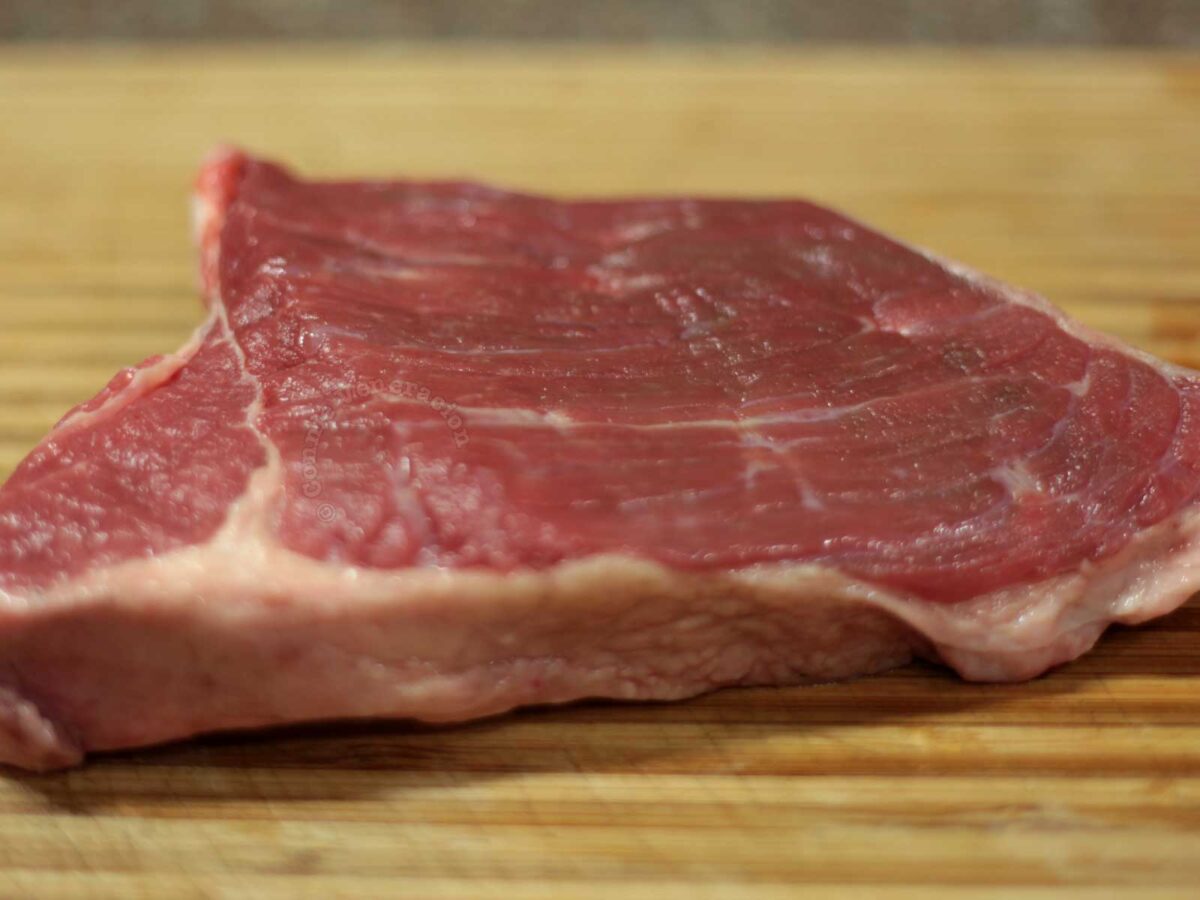
“Cutting across the grain” means slicing the meat at an angle perpendicular to the direction of the fiber. Think of the letter T. If the bar on top of the T shows the direction the meat fiber goes, then, position your knife to be the vertical line of the letter T.
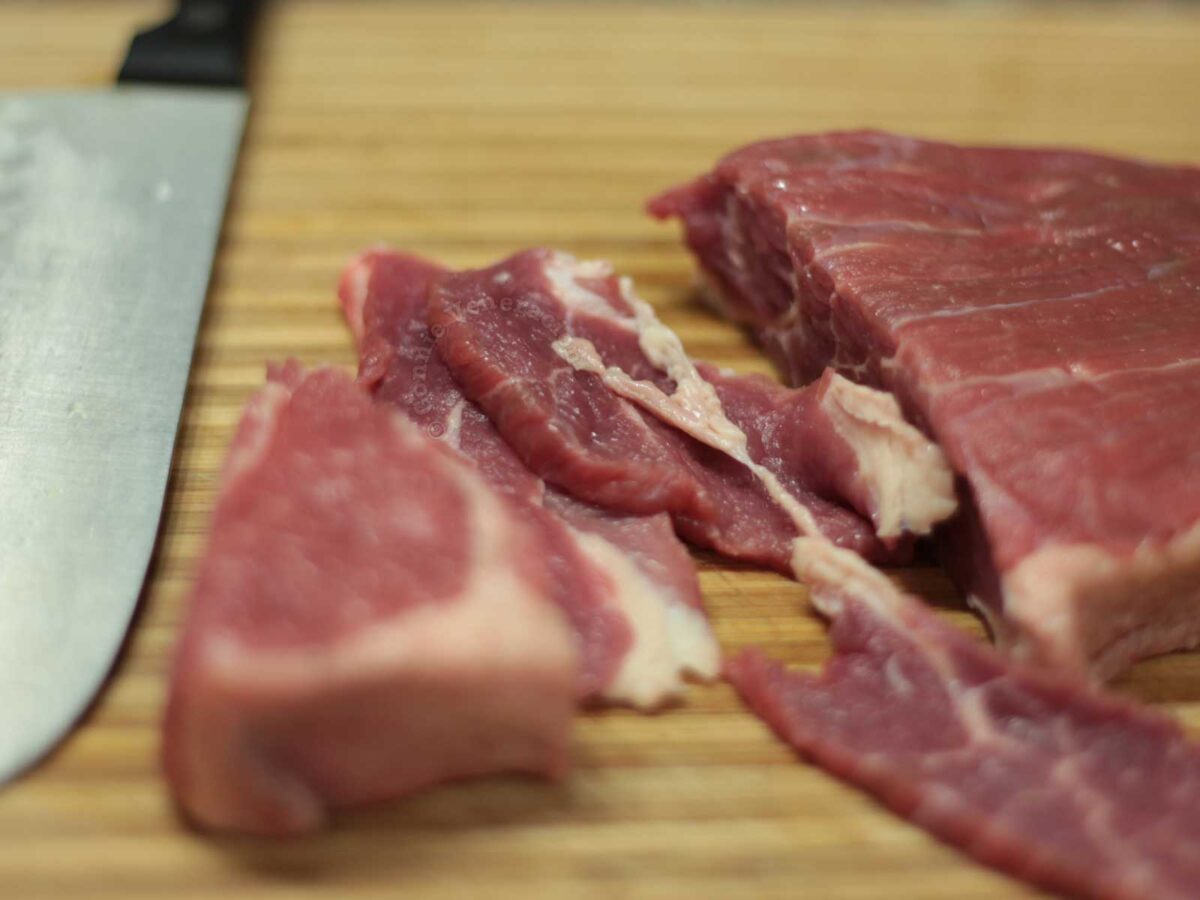
What you’re aiming for is cutting those long fibers into the shortest possible length because the shorter the fibers, the shorter the cooking time required for the beef to become tender.
To make slicing even easier, chill the meat to firm it up. What I do is stick the meat in the freezer for about two hours or just long enough to make it really firm but before ice crystals start to form. With a super sharp knife (oh, yes, a sharp knife is always essential in the kitchen), I just slide the blade across the meat and, presto! — I have uniform slices. It does take a little practice but it’s not a complicated task.
Soak the meat in diluted baking soda
If, after having cut your meat correctly and pounding it to break the fibers, you’re still doubtful if it will get to that perfect level of tenderness, then, it’s time for the third trick for tenderizing meat. Baking soda.

To 500 to 600 grams of sliced meat, pour 1/2 teaspoon of baking soda dissolved in about half a cup of water. Mix well and let sit in the fridge for at least 15 minutes. Soaking the meat longer results in no added benefit because the baking soda reacts instantly and no further reaction comes after that.
After soaking, rinse the meat well. Baking soda leaves a nasty aftertaste and you want to remove all of that. Rinse the meat thoroughly, drain then press with a kitchen towel.
Use pureed fruit
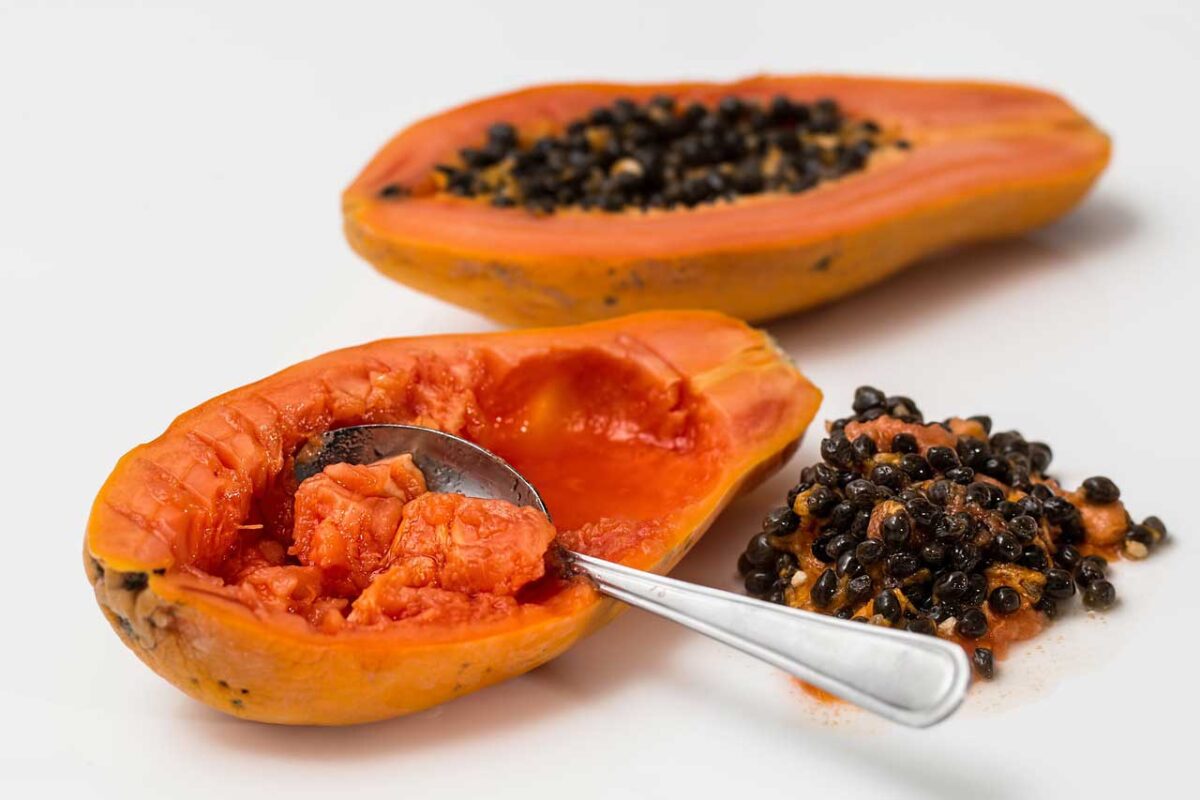
If baking soda is not for you (some people have bad digestive reactions to it), you can try soaking your sliced meat in mashed fruit — not any fruit but those that contain protease which breaks down meat protein. I’ve used papaya in the past; I’ve read that kiwi, pineapple and mango are great too.
Use pureed fruit or just the juice. Two tablespoons per 500 grams of meat is a good starting point.
Note, however, that unlike baking soda:
- Fruit enzymes don’t work as fast. Overnight in the fridge is the minimum.
- Know too that prolonged soaking in fruit will continue to tenderize the meat to the point of mushiness.
- You can’t wash off the fruity taste.
So, if using fruit to tenderize meat, make the fruit part of the marinade. That way, the fruity flavor will blend in with the rest of the seasonings.
Will tenderizing meat make them sping-y and velvety?
No, not likely. That texture is acquired through a process called “velveting”. Read all about velveting.

